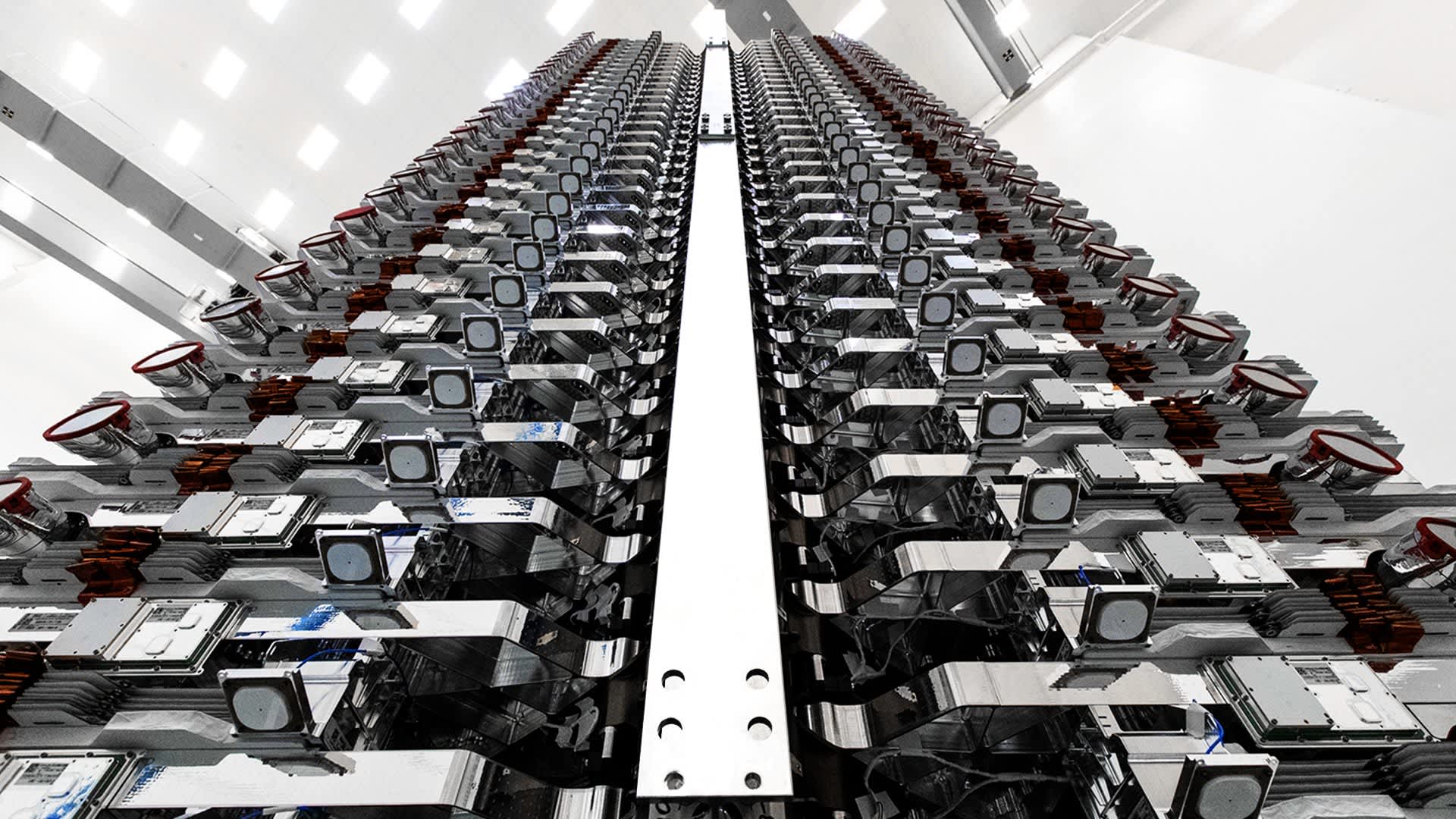A stack of Starlink internet satellites just before a launch.
SpaceX
SpaceX is manufacturing its Starlink satellites at an unprecedented rate for the space industry, analysts say, as the company dives headlong into building a space-based global internet service.
Elon Musk’s company told the Federal Communications Commission in a presentation last month that its Starlink unit is “now building 120 satellites per month” and has “invested over $70 million developing and producing thousands of consumer user terminals per month.”
“Invested hundreds of millions of dollars in Starlink to date,” the SpaceX presentation added.
A slide from SpaceX’s July 2020 presentation to the FCC.
SpaceX
Starlink is SpaceX’s ambitious plan to build an interconnected network of about 12,000 small satellites, to beam high-speed internet from orbit to anywhere in the world. The company has so far launched nearly 600 Starlink satellites and is currently building a system of ground stations and user terminals, to connect consumers directly to its network.
It’s difficult to contextualize what SpaceX’s satellite production rate means given the difference in size and complexity of spacecraft built by other companies. But Quilty Analytics founder Chris Quilty told CNBC that Starlink manufacturing is happening at a speed never before seen in the satellite sector. Quilty’s boutique research and investment firm focuses on the satellite communications sector, which he founded after leading Raymond James’ coverage of the space industry for 20 years.
“To put it in perspective, Iridium, which previously held the record for the largest commercial satellite constellation, was manufacturing satellites at the rate of about six satellites per month at the peak of production,” Quilty said.
Iridium’s NEXT satellites are nearly three times the size of a Starlink satellite, at about 670 kilograms versus an estimated 260 kilograms. But with the caveat that each Starlink is smaller than an Iridium satellite, SpaceX is building its spacecraft 20 times as fast.
Notably, Quilty pointed out that Iridium’s satellites were built by European aerospace conglomerate Thales Alenia Space. Additionally, rival satellite internet startup OneWeb was building satellites at a rate of about 30 per month before it went bankrupt — and Quilty highlighted that OneWeb’s production line was designed and built in collaboration with Airbus, another European aerospace giant. That makes Starlink the only of the three with satellites built solely by a U.S. firm, as well as the most productive.
“American ingenuity wins again,” Quilty said.
On the customer side, SpaceX last week told the FCC that is already seeing “extraordinary demand” from people interested in Starlink’s internet service. The company said ”nearly 700,000 individuals” across the United States said they were interested in the service, causing SpaceX to request that the FCC increase the number of authorized user terminals to 5 million from 1 million.
Right now it seems the primary bottleneck for Starlink’s service lies in how quickly SpaceX can launch the satellites, according to industry analytics firm Bryce Space and Technology. The company has been launching Starlink missions about once per month with its Falcon 9 rocket fleet.
“At 60 satellites per Falcon 9, SpaceX is also driven to bring its Starship launch vehicle online as soon as it can, as the company says each will be able to carry 400 Starlink satellites at a time,” Bryce senior space analyst Phil Smith told CNBC.
A SpaceX Falcon 9 rocket lifts off from Cape Canaveral Air Force Station carrying 60 Starlink satellites on November 11, 2019 in Cape Canaveral, Florida. The Starlink constellation will eventually consist of thousands of satellites designed to provide world wide high-speed internet service.
Paul Hennessy | NurPhoto | Getty Images
Subscribe to CNBC PRO for exclusive insights and analysis, and live business day programming from around the world.

